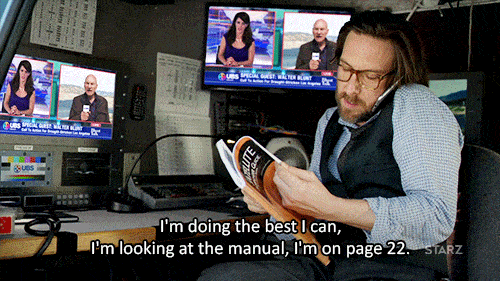
Whenever you start something new, you need a little guidance, right? A set of instructions to tell you how to do the thing. And that’s exactly what today’s exercise is all about.
But wait.
You’re going to write the instructions. And not just any instructions. Fictional ones. Slightly weird ones. Instructions with feelings in them. Instructions with a story in them.
How? Well, that’s the question, isn’t it?
Follow the instructions:
First: pick one of the following ‘how tos’ – or come up with one of your own. It could be anything. Something you definitely know how to do. Something you definitely don’t. Something tangible, mundane, ridiculous, abstract, or physically impossible.
For example:
- How to catch a fish
- How to make an omelette
- How to escape a black hole
- How to build a bridge
- How to fall in love
- How to do a backflip
- How to catch the moon
- How to knit a scarf
- How to apologise
- How to find the perfect Christmas gift
- How to breathe
- How to fit a dozen clowns into a tiny car
- How to write a story (lol)
Now, your task here is to write a set of instructions that may or may not tell the reader how to do the thing you’re explaining but somehow tell a story.
Take your ‘how to’ and see if it sparks off some kind of memory or an intriguing idea or visual. Maybe something a bit weird or unexpected. Maybe something metaphorical.
Then ask yourself:
What’s the story about?
It’s about how to make an omelette. Easy: chop veg, whisk eggs, fry, flip, etc.
Ok, but what’s it really about?
Hmm. Maybe it’s the first recipe your dad ever taught you and how you think about him every time you crack an egg.
Or maybe you once had a terrible break-up in the middle of making an omelette and you ended up throwing the whole thing in the sink.
Or maybe it’s an entirely made up scenario in which the omelette starts talking to someone as they’re cooking it and convinces them to go vegan.
Or maybe it’s a whole exploration into that old phrase “you can’t make an omelette without breaking a few eggs” – a grand metaphor about the eternal balance between destruction and creation…

Right, now how can you weave those two ideas together?
Well, here’s where the magic happens!
Start by writing down some basic instructions for your ‘how to’ theme – don’t overthink it, just go wherever your brain takes you, even if the instructions don’t make sense or would in fact make a terrible omelette.
Keep in mind what the story’s really about as you do this, and see where you might naturally veer off onto a tangent, or subtly start to layer in clues for your second story thread.
Think of the instructions as the structural part of the piece — the story delivery method, if you will.
While the secondary thread (the weird, personal, metaphorical bit) is more about the feelings — the human at the heart of the story.
Blend the two together and you’ve got something interesting, unique, and maybe just a little bit weird, but likely very cool.
And remember, there’s no right or wrong way to do this — only what works for your story. It could be formally structured (eg: a bullet list, numbered list, recipe, a set of rules, construction method, equation, etc) or it could be free flowing and flit back and forth between ideas. Give it a try and see what happens!

And check out some of these instructional story examples to see just a few of the different ways it can be done:
How to Survive the Apocalypse by Martha Grover
Last Will by Rachel Sherman
Shadow Broth by Ingrid Jendrzejewski
Rules of the High Wire by Stephanie Hutton
Horses Not Included by H L Fullerton
And that’s it. You have your instructions, now set a timer for 20 minutes and get, um, instructing!
(Psst. Want more advice on writing unique short fiction? Check out our Ten Top Tips for Writing Flash Fiction or dive right into the super comprehensive Writers’ HQ Guide to Flash Fiction course!)








